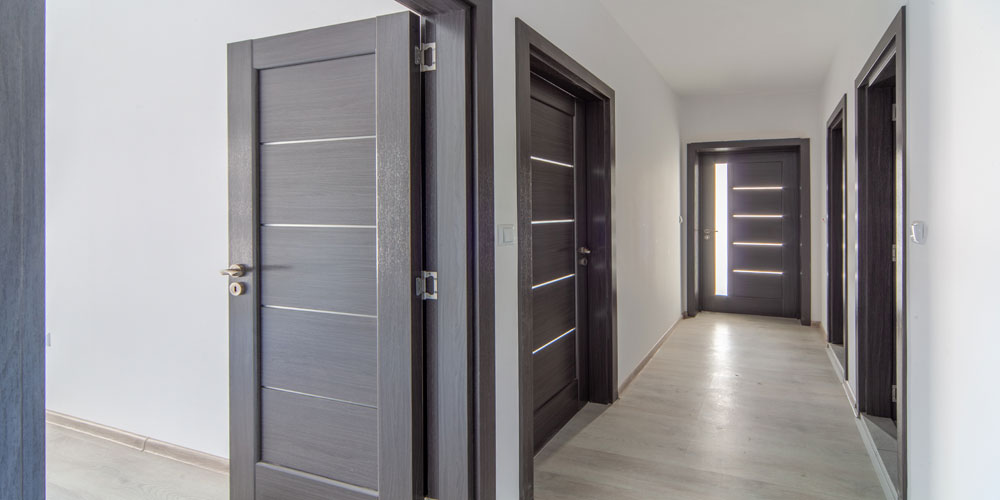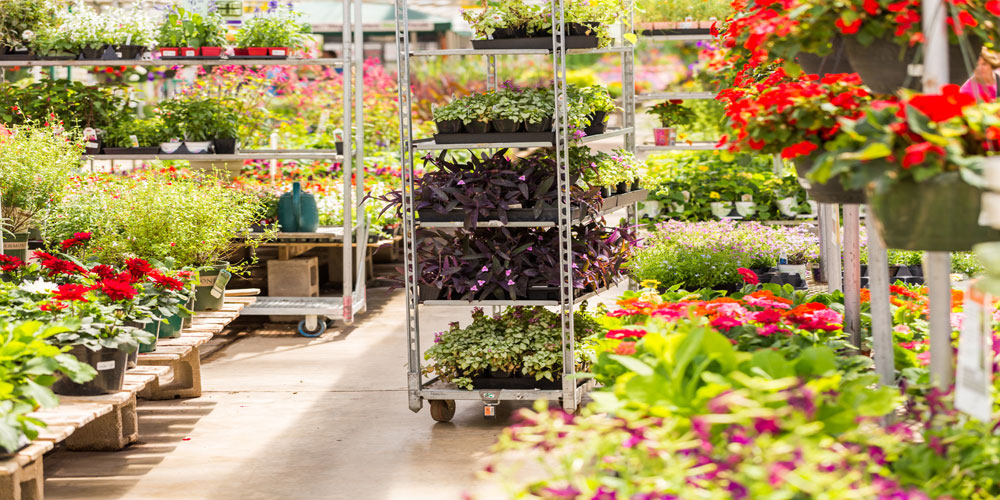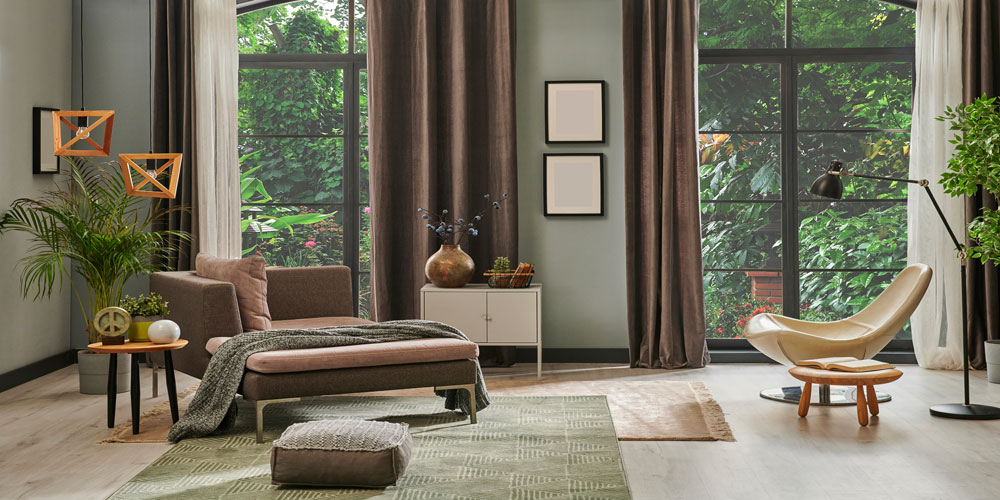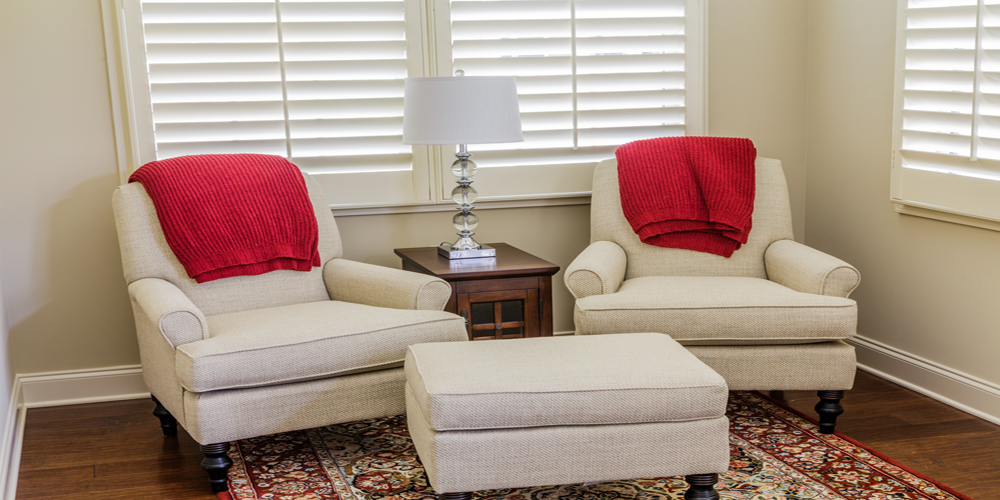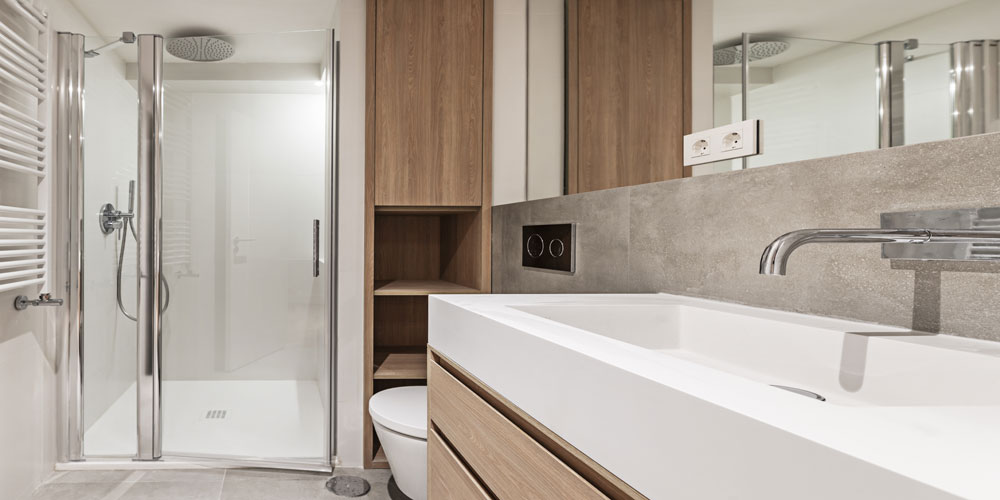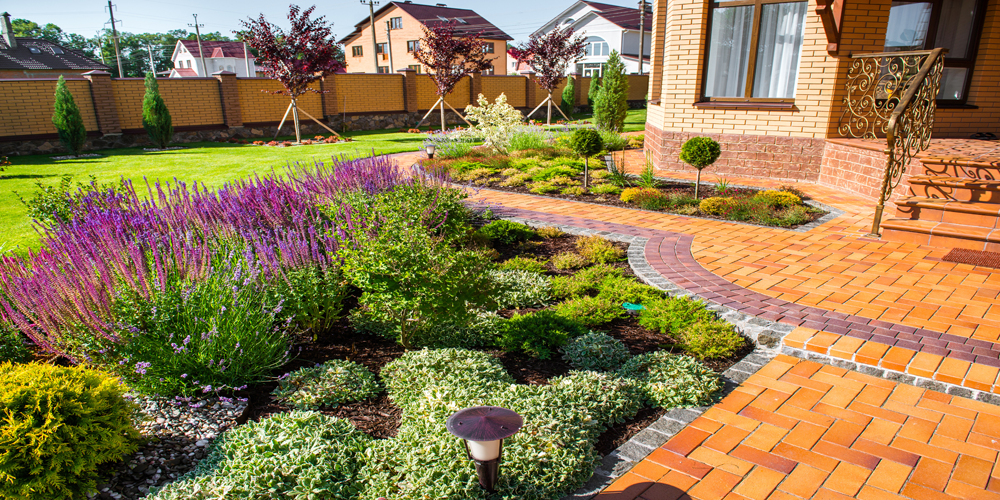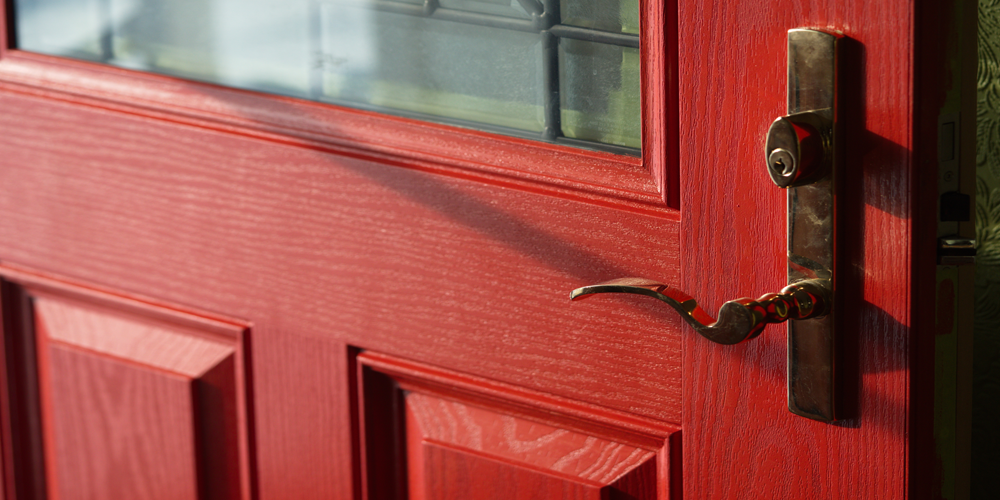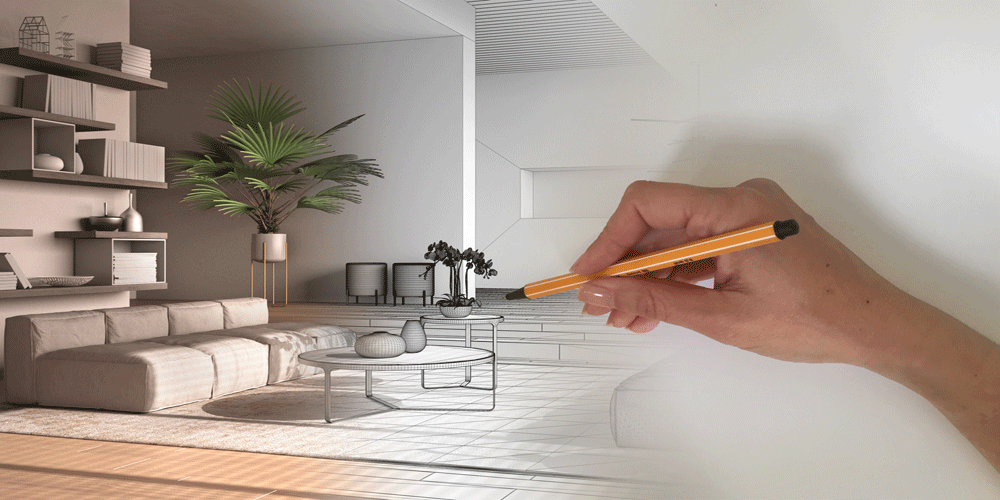Transform Your Outdoor Space: Landscape Gardening & Paving
Landscape gardening is a meticulous art that combines creativity with functionality, aiming to enhance the aesthetic and practical aspects of an outdoor space. This can range from the design and planting of residential gardens to the creation of expansive public parks. The scope of landscape gardening encompasses various elements, including the selection and arrangement of plants, trees, and shrubs, the integration of water features, and the construction of hardscaping elements such as pathways, patios, and retaining walls. The ultimate goal is to create harmonious environments that are not only visually appealing but also cater to the needs and preferences of the property owner.
Importance of Paving in Outdoor Design
Paving plays a critical role in the structure and usability of landscape designs. It provides the foundation for outdoor spaces, making areas accessible and functional. Whether through pathways that guide visitors through a garden or patios that offer a space for relaxation, paving adds both form and function. Different paving materials like block paving, natural stone, and concrete each bring unique aesthetics and durability to an outdoor space. Well-planned paving can also enhance safety by creating level surfaces and integrating lighting to illuminate walkways and driveways. Thus, paving is not just a practical necessity; it is a fundamental aspect of cohesive outdoor design.
Benefits of Transforming Outdoor Spaces
Transforming outdoor spaces offers numerous advantages, both practical and emotional. On a practical level, well-designed gardens and paved areas can significantly increase the functionality of your property, providing designated areas for dining, entertaining, and relaxation. Such transformations also positively impact property value, making them a worthwhile investment. On an emotional level, beautifully landscaped gardens can enhance well-being, offering a tranquil retreat from the hustle and bustle of everyday life. Additionally, the aesthetic improvement can create a strong sense of pride and satisfaction for homeowners, fostering a deeper connection to their living environment.
By understanding the fundamentals of landscape gardening and the critical role of paving, one lays the groundwork for successfully planning and executing an outdoor transformation project.
Planning Your Outdoor Transformation
Assessing Your Current Outdoor Space
A successful outdoor transformation begins with a thorough assessment of your existing area. Start by cataloguing its dimensions and noting any existing elements such as trees, slopes, or structures. Evaluate the soil quality and identify areas that receive ample sunlight versus those in shade. It is crucial to recognise both the strengths and limitations of your space, as this will guide the development of a realistic and effective design plan. This foundational step ensures that you tailor your transformation to the unique characteristics of your yard.
Determining Your Needs and Preferences
Once you understand your current space, consider your personal needs and preferences. Ask yourself what functions your outdoor area should serve. Do you envision a tranquil garden, a robust play area for children, or an entertainment zone complete with an outdoor kitchen? Your lifestyle and future activities should heavily influence your decisions. Take into account the aesthetics that appeal to you, whether a formal, symmetrical design or a more natural, freeform approach. Your preferences will shape the details and elements of your landscape design, contributing to a space that reflects your personality and meets your requirements.
Creating a Comprehensive Landscape Design Plan
Creating a comprehensive landscape design plan synthesises your assessments and preferences into a cohesive vision. Begin by sketching a layout that incorporates key elements such as plants, trees, flowerbeds, pathways, and focal points. Next, consider practical aspects like irrigation, drainage, and accessibility. Establish zones for various functions, ensuring a harmonious flow between areas designed for leisure, play, and utility. This step often involves meticulous planning and may benefit from digital tools or professional input to visualise and fine-tune your design. A well-crafted plan is essential for a successful outdoor transformation, providing a roadmap to turn your vision into reality.
Essential Elements of Landscape Gardening
Incorporating Plants, Trees, and Shrubs
The foundation of any effective landscape gardening project lies in the careful selection and placement of plants, trees, and shrubs. These elements not only enhance the visual appeal of your garden but also provide environmental benefits such as improving air quality and offering habitats for wildlife.
When choosing plants, consider the specific conditions of your garden. Evaluate soil type, sun exposure, and climate compatibility. Native plants are often the best choice, as they are well-suited to local conditions and require less maintenance. Trees can serve as the backbone of your landscape design, offering shade and focal points, while shrubs can be used to create structure and define spaces.
Designing Flowerbeds and Borders
Flowerbeds and borders play a crucial role in adding colour, texture, and variety to your garden. When designing these features, think about the layering of plants, ensuring that taller plants are placed at the back with shorter ones in the front. This approach maximizes visibility and helps create a balanced, harmonious look.
Choose a mix of perennial and annual plants to ensure that your garden remains vibrant throughout the year. Perennial plants provide a stable foundation and come back year after year, while annuals add seasonal bursts of colour and can be changed to suit different seasons or themes.
Creating Focal Points with Water Features or Rockeries
Focal points are essential in landscape design, as they draw the eye and add interest to the garden. Water features, such as ponds, fountains, or waterfalls, can create a sense of tranquillity and act as a central feature around which other elements are arranged. The sound of flowing water can also mask unwanted noise and contribute to a relaxing atmosphere.
Alternatively, rockeries can serve as striking focal points, particularly in gardens with a naturalistic or rugged aesthetic. Use a variety of rocks, stones, and gravel to create height and texture, and incorporate alpine plants or succulents that thrive in rocky conditions.
Each of these elements contributes to a cohesive and inviting outdoor space, tailored to your unique preferences and the specific conditions of your garden. As you refine your landscape design, remember that integrating functional and aesthetic components will produce the most satisfying and enduring results.
Moving forward, you’ll explore how different paving options can further enhance your outdoor area, ensuring longevity and aesthetic appeal.
Paving Options for Your Outdoor Space
Types of Paving Materials
When transforming your outdoor space, selecting the right paving material is crucial for both functionality and aesthetics. Various options are available, each with distinct characteristics and advantages.
Block Paving: This material is popular for its versatility and durability. Made from concrete or clay, block paving offers a wide range of colours, sizes, and textures. Block Paving is ideal for driveways and pathways due to its ability to withstand heavy loads while providing an attractive finish.
Natural Stone: Known for its timeless beauty and strength, natural stone such as sandstone, limestone, and granite are excellent choices for patios and garden paths. Each stone’s unique veining and colour add a touch of elegance to the outdoor space.
Concrete Slabs: These are practical and economical options. Concrete slabs are available in various shapes and sizes, and can mimic the appearance of more expensive materials. They’re suitable for patios and walkways and are relatively easy to install.
Gravel: Ideal for informal areas and garden paths, gravel is easy to lay and relatively inexpensive. It’s excellent for drainage and gives a rustic look, although it requires regular maintenance to keep it tidy.
Porcelain Tiles: Increasingly popular for modern gardens, porcelain tiles are known for their durability and sleek appearance. They’re easy to clean and resistant to stains, making them suitable for patios and around swimming pools.
Choosing the Right Paving for Different Areas
Different outdoor areas have distinct requirements that influence the choice of paving materials:
Driveways: Durability is key for driveways. Block paving and natural stone are excellent choices as they can withstand heavy vehicle traffic and are visually appealing.
Patios: For patios, consider the aesthetics and comfort underfoot. Natural stone and porcelain tiles provide a visually appealing and comfortable surface for walking and sitting.
Pathways: Safety and ease of maintenance are crucial for garden pathways. Gravel and concrete slabs are practical choices, with gravel offering superior drainage and concrete being easy to maintain.
Considerations for Durability and Aesthetics
When selecting paving materials, it’s essential to balance durability and aesthetics to ensure a cohesive and lasting design.
Durability: Consider the climate and the level of foot or vehicle traffic. Areas experiencing heavy use need durable materials like block paving or natural stone. Evaluate the material’s resistance to frost, moisture, and wear.
Aesthetics: The visual appeal of your paving should complement the overall landscape design. Choose colours and textures that blend seamlessly with other garden elements. Natural materials like stone or wood-effect porcelain tiles offer a harmonious look.
Maintenance: Factor in the maintenance requirements of each material. Some, like gravel, may require more frequent cleaning and replenishing, while others, like porcelain tiles, are low maintenance.
By carefully selecting the appropriate paving materials and considering their placement, you can craft an outdoor space that is both functional and visually stunning. Next, we will explore how to create functional outdoor living areas that enhance your lifestyle.
Creating Functional Outdoor Living Areas
Designing Patios and Sitting Areas
A well-designed patio can serve as an extension of your home, offering a versatile space for relaxation, entertainment, and dining. The key to designing an effective patio is to identify the primary function it will serve. Will it be a cosy retreat for reading and relaxation, a social hub for gatherings, or a dining area? Once the purpose is clear, selecting the appropriate materials and furniture becomes simpler.
Consider durable, weather-resistant materials like natural stone, brick, or concrete for the flooring. Each material offers unique aesthetic and practical benefits. Natural stone provides a timeless, elegant look, while brick can create a warm, rustic appeal. Concrete is versatile and can be customised with stains, stamps, or texture to match your desired style.
Incorporating Outdoor Kitchens or Dining Spaces
Creating an outdoor kitchen or dining space can greatly enhance your outdoor living experience. These areas make it convenient to cook and dine outside, thus allowing you to make the most of your garden during warm months.
Key elements of an outdoor kitchen include a grill, work surface, storage, and possibly a sink. Ensuring these elements are weather-resistant and easy to clean is crucial. Use materials like stainless steel for appliances and natural stone or treated wood for countertops. For dining spaces, consider installing a pergola for shade and incorporating comfortable, durable furniture.
Lighting is also essential; opt for a mix of task lighting for cooking and ambient lighting for dining, ensuring the area is both functional and inviting after sunset.
Building Retaining Walls and Raised Beds
Retaining walls and raised beds can add both functionality and aesthetic appeal to your outdoor space. Retaining walls help manage slopes and create level areas for planting or patio spaces. They can be built using a variety of materials, including stone, brick, or concrete blocks, each offering different stylistic options and levels of durability.
Raised beds are an excellent way to organise and segregate different planting areas, making maintenance easier and improving plant health. They allow for better soil control and drainage, which is particularly beneficial in areas with poor soil quality. Raised beds can also be constructed from various materials such as wood, brick, or stone, depending on the desired look and budget.
By seamlessly integrating these elements, your outdoor space can become a functional and aesthetically pleasing extension of your home, enhancing your living experience.
Enhancing Curb Appeal with Driveways and Pathways
Designing Attractive and Functional Driveways
The driveway is often the first aspect of your home that visitors notice. Creating a functional yet attractive driveway can significantly enhance your property’s curb appeal. When choosing materials for your driveway, consider both durability and aesthetics. Options such as interlocking pavers or concrete provide robust solutions that cater to various design tastes. For instance, concrete driveways offer a clean, modern look, while brick pavers can introduce a rustic charm. It’s also essential to design with functionality in mind, ensuring the driveway can withstand heavy use and adverse weather conditions. Considering patterns, textures, and colours can further personalise your driveway, setting the tone for the rest of your landscape.
Creating Inviting Pathways and Garden Walks
Pathways and garden walks serve a dual purpose: they not only guide foot traffic but also add structure to the garden. When designing pathways, think about how they will integrate with the existing garden features and your overall landscape design. Using materials like natural stone, gravel, or brick can create visually appealing pathways that complement the surrounding flora. Pathways should be wide enough to allow easy passage and built using stable, slip-resistant materials to prevent accidents. Adding curves or variations in the path can introduce visual interest and a sense of discovery as one navigates through the garden.
Incorporating Lighting for Safety and Ambiance
Lighting is a crucial element in landscape design, enhancing both safety and aesthetic appeal. Properly lit driveways and pathways prevent accidents and allow the outdoor space to be used effectively, even at night. Solar-powered lights, low-voltage lighting, or LED strips can be strategically placed along the driveway or pathways to illuminate the way. Beyond functionality, lighting can also create ambiance, casting shadows and highlighting focal points in the landscape. Consider using different lighting styles, such as uplights for trees or soft ground-level lights for pathways, to add depth and accentuate your garden’s beauty.
By thoughtfully designing driveways, pathways, and incorporating strategic lighting, you can transform your outdoor space into an inviting and functional area. These enhancements not only boost the aesthetic appeal but also ensure safety and convenience for everyday use.
Drainage and Practical Considerations
Importance of Proper Drainage in Landscape Design
Proper drainage is a pivotal factor in landscape gardening that ensures the longevity and functionality of both greenery and paved areas. Without adequate drainage, water may accumulate, leading to soil erosion, plant disease, and structural damage to pathways or patios. Effective drainage mitigates these risks by directing water away from critical areas, preserving the integrity of your landscape design.
Incorporating Sustainable Drainage Solutions
Sustainable drainage systems (SuDS) offer eco-friendly solutions that manage water naturally. These systems incorporate methods like permeable paving, which allows water to seep through surfaces and be absorbed into the ground. Rain gardens, another sustainable option, collect and filter runoff, promoting healthier plant growth and reducing the strain on local waterways. Utilising these sustainable drainage solutions not only enhances the efficiency of your outdoor space but also contributes to environmental conservation.
Maintaining Your Landscape and Paved Areas
Regular maintenance is essential to uphold the beauty and functionality of your landscaped and paved areas. For paved surfaces, routine cleaning and sealing help prevent the buildup of dirt, algae, and weeds, extending the life of the materials. In terms of plant maintenance, periodic pruning, mulching, and soil aeration ensure that your garden remains vibrant and healthy. Good upkeep practices also involve checking and clearing drainage systems to prevent clogs and overflows, thus maintaining the overall efficacy of your outdoor space.
Your efforts in drainage and practical considerations not only protect your investment but also pave the way for a sustainable and resilient garden landscape.
Adding Value to Your Property
How Landscape Gardening and Paving Increase Property Value
Investing in landscape gardening and paving can significantly boost your property’s value. Beautifully designed outdoor spaces not only enhance visual appeal but also increase functional living areas. A well-planned landscape can provide a serene environment, adding to the property’s allure for potential buyers. Key aspects like lush lawns, well-maintained gardens, and attractive paving create a positive first impression, highlighting the property’s quality and care.
Cost-Effective Improvements for Maximum Impact
Enhancing your outdoor space doesn’t have to be exorbitantly expensive. Focus on cost-effective improvements that yield high returns:
Native Plants: Incorporate native plants that adapt well to your local climate, reducing maintenance and water costs.
Perennial Flower Beds: Create vibrant flower beds with perennials that return year after year, minimizing replanting expenses.
Seating Areas: Simple patios or deck areas provide valuable outdoor living space without requiring extensive landscaping.
Gravel Pathways: Opt for gravel pathways as a budget-friendly alternative to more expensive paving stones.
These affordable enhancements add aesthetic appeal and practicality, making your property more attractive to prospective buyers.
Long-Term Benefits of Investing in Outdoor Spaces
Long-term investments in landscape gardening and paving extend beyond immediate visual appeal. These improvements can lead to:
Energy Efficiency: Strategically planted trees and shrubs can provide shade, reducing cooling costs in the summer.
Erosion Control: Proper landscaping prevents soil erosion, protecting your property’s foundation and structural integrity.
Enhanced Privacy: Dense hedges and strategically placed trees offer privacy, a desirable feature for many homeowners.
Outdoor Enjoyment: Attractive and functional outdoor spaces encourage social gatherings and personal relaxation, enhancing overall quality of life.
Maintaining and developing your outdoor space ensures it continues to add value over the years, making it a worthwhile long-term investment.
Working with Professional Landscape Gardeners
Benefits of Hiring a Professional Landscaper
Engaging a professional landscape gardener can bring significant advantages to your outdoor project. These experts possess the knowledge and experience needed to design functional and aesthetically pleasing spaces that align with your vision and the unique characteristics of your property.
Expertise and Creativity: Professionals bring a deep understanding of plant species, soil types, and climate, ensuring the right choices for your garden. Their creativity helps in integrating different elements seamlessly, resulting in a harmonious design.
Time and Cost Efficiency: While it might seem costlier upfront, hiring a professional can save money in the long term. They avoid costly mistakes and optimally use resources, ensuring that the project stays within budget and on schedule.
Access to Quality Materials and Tools: Landscape gardeners often have access to high-quality plants, materials, and tools that may not be readily available to the general public. This can enhance the durability and aesthetic appeal of your outdoor space.
Project Management: From planning to execution, professionals handle every aspect of the project, including permits and liaising with suppliers. This reduces the stress and effort required on your part.
What to Look for in a Landscape Gardening Service
Choosing the right landscape gardening service is crucial to the success of your project. Here are some key factors to consider:
Experience and Reputation: Look for companies with a proven track record and positive customer reviews. Past projects can give you an idea of their style and expertise.
Certifications and Memberships: Ensure the landscaper is certified by relevant bodies and is a member of professional associations. This indicates a commitment to standards and ongoing education.
Portfolio and References: A reliable landscaper should provide a portfolio of completed projects and be willing to share references. Contact past clients to get an understanding of their satisfaction and the quality of work delivered.
Clear Communication: Effective communication is vital. The landscaper should be willing to listen to your ideas and provide clear explanations about the process, timelines, and costs involved.
Collaborating with Experts for Best Results
Effective collaboration with your chosen landscaper can ensure that your project meets your expectations. Here are some strategies to foster a productive partnership:
Define Your Vision: Start with a clear vision of what you want to achieve. Share your ideas, needs, and any preferences with the landscaper. Visual aids, such as photos and sketches, can be very helpful.
Set a Budget and Timeline: Discuss your budget and timeline upfront. A professional will provide guidance on what is feasible within your constraints and suggest adjustments if necessary.
Regular Communication: Maintain open and regular communication throughout the project. Schedule frequent check-ins to review progress, address any concerns, and make adjustments as required.
Trust Their Expertise: While it’s essential to convey your preferences, be open to the landscaper’s suggestions. Their experience can offer valuable insights and solutions you might not have considered.
Working with professional landscape gardeners can transform your outdoor space into a stunning and functional area that complements your lifestyle and enhances your property’s value. This collaborative approach ensures a thoughtful and well-executed landscape design.
Bringing Your Outdoor Vision to Life
Recap of Key Points in Transforming Your Outdoor Space
Transforming your outdoor space is a multifaceted endeavour that combines landscape gardening and paving to create aesthetically pleasing and functional environments. We began by defining landscape gardening, highlighting its scope and impact on property value and personal well-being. We covered the importance of paving in creating accessible, durable, and visually appealing outdoor areas.
The planning stage emphasised assessing your current space and creating a comprehensive design plan that aligns with your needs and preferences. Essential elements such as plants, trees, flowerbeds, water features, and rockeries were discussed as foundational aspects of your garden design.
We explored various paving materials, from block paving to natural stone, and how to select appropriate materials for different outdoor areas. The creation of functional living spaces, including patios, outdoor kitchens, and seating areas, was also covered, alongside important considerations for durability and aesthetics. Furthermore, we examined how to enhance curb appeal through well-designed driveways and pathways and the importance of incorporating lighting for safety and ambiance.
Practical considerations like proper drainage and sustainable solutions were addressed to ensure long-term functionality and environmental benefits. Finally, we discussed the value added to your property through well-executed landscape gardening and paving projects and the benefits of working with professional landscape gardeners to achieve the best results.
Encouragement to Start Your Landscape Gardening Project
Embarking on your landscape gardening project is an exciting journey that promises numerous rewards. Your outdoor space has the potential to become an extension of your home—a place of beauty, relaxation, and functionality. Whether you aim to increase your property value, create a serene retreat, or simply enhance the usability of your space, the transformation begins with a single step. By methodically planning and thoughtfully choosing elements that reflect your style and meet your needs, you can create an outdoor environment that truly resonates with you and your family.
Creating a Beautiful and Functional Outdoor Area
Creating a beautiful and functional outdoor area is an ongoing process that evolves with time and personal preferences. As your needs change, so too can your landscape. Regular maintenance, updates, and seasonal adjustments ensure your outdoor space remains vibrant and inviting. Remember, the key to a successful transformation lies in a harmonious blend of aesthetics and practicality. Whether through the lush greenery of your garden or the sturdy, elegant paving of your pathways and patios, every element should contribute to a cohesive and enjoyable outdoor experience.
By embarking on your landscape gardening project, you are not merely altering your environment; you are enhancing your lifestyle. Take the insights gained from this guide to bring your outdoor vision to life, creating a space that is uniquely yours and one that you will cherish for years to come.


